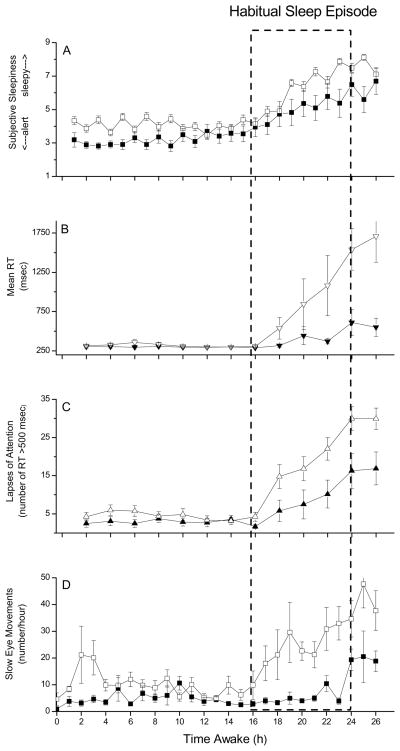Figure 1.
Subjective Sleepiness, Reaction Time, Lapses of Attention, and Attentional Failures Across 26 Hours of Wakefulness in Young and Young-Old Subjects. Group average (± SEM) data are plotted with respect to time since scheduled awakening for the older (filled symbols) and young (open symbols) subjects. Dashed box indicates time of usual sleep episode.
Subjective sleepiness ratings from the Karolinska Sleepiness Scale (KSS; scale range from 1=very alert to 9=very sleepy) are presented in Panel A.
Mean reaction time (RT, in milliseconds) from each 10-minute Psychomotor Vigilance Task (PVT) are presented in Panel B. As indicated in the first 16 hours of data, “normal” mean RT using this test in well-rested individuals is ~250 milliseconds and shows little variability [17;18].
The total number of lapses of attention (reaction times >500 milliseconds) from each 10-minute PVT are presented in Panel C. Well-rested individuals will typically have very few (<5 per test administration) lapses of attention under these conditions [17;18].
Attentional failures, defined as intrusions of slow eye movements (SEM) from continuous electro-oculographic recordings during EEG-verified wakefulness, were summed hourly and are presented in Panel D. Well-rested individuals will typically have very few SEM under these conditions [12;18].

